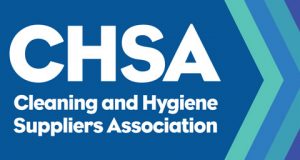Most cleaning and maintenance professionals will know that the hands are the one of the most important tools of the job. Good skin care is crucial in order to ensure that they are kept in good condition; effective and thorough handwashing is vital when it comes to the prevention of occupational skin disorders (OSDs) – a skin care issue that is prevalent among manual workers.
OSDs affect a huge number of people who work with their hands; according to the Centers for Disease Control & Prevention around 40% of workers will experience one at some point in their career. Often seen as a hazard of the job, dry, cracked and sore skin is actually a serious issue, and can lead to unpleasant skin disorders such as eczema or dermatitis. Frequent handwashing with inappropriate formulations can lead to occupational skin disorders, costing employers and employees in both money and time. So, what is the best way to approach hand hygiene and skin care in an environment that presents such a varied challenge?
One of the reasons OSDs are particularly prevalent among cleaning professionals is frequent contact with contaminants on the job. Chemicals, cleaning products and general dirt are just some of the substances tackled daily and contact with the hands either via surfaces or cleaning tools can soon take its toll. Similarly, if the hands are damp or wet for prolonged periods of time, without proper skin care, an OSD can be a serious risk.
Skin care experts SC Johnson Professional have some recommendations for those who work frequently with contaminants, when it comes to good skin care and handwashing.
First and foremost, the type of hand cleaner or soap being used should be considered. It should be appropriate to the type of dirt or soiling on the skin – if the cleaner is too weak or strong, it can do more harm than good. Too weak, and it won’t clean your skin properly – too strong, and it could dry out the skin. Employees should use the mildest cleaner that will remove contaminants effectively, as this will help avoid loss of the skin’s natural oils.
Good skin care also consists of three steps: protection, cleaning and restoring. Before work, a good protection cream should be applied, as this will make skin easier to clean at the end of the day. Hands should be washed regularly throughout the day, accompanied by the reapplication of the protection cream after each wash, and a restoring moisturiser should be applied at the end of a shift.
Based on research published in Contact Dermatitis, it is estimated that each unreported case of dermatitis costs a business £6,000 – so quality skin care products is something that employers or facilities managers should be investing in. For maintenance professionals who often work on the move, a lack of proper skin care products is also a common issue. With the right provisions onsite, OSDs can be effectively tackled by changing attitudes to skin care through training and placing more importance on using the right products at the right time.





